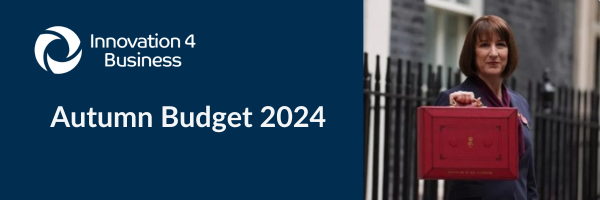Chancellor Rachel Reeves delivered Labour’s first budget in 15 years, outlining the new government’s spending plans for the upcoming year
The October Autumn Budget is not only detailing the changes that will come with our new leaders, it is also revealing how the economy can be anticipated to look under Labour.
About The Budget
The Prime Minister had previously stated that the budget will focus on boosting living standards, including reviving the NHS and “rebuilding Britain”, where he intends to make investments in previously neglected areas of the budget such as schools, housing and transport.
Chancellor Reeves delivered the budget with investment and stability at the heart of it, keeping to the party manifesto commitments, whilst increasing taxes for businesses and entrepreneurs.
“The only way to drive economic growth is to invest, invest, invest,” said Reeves. “There are no shortcuts and to deliver that investment, we must restore economic stability and turn the page on the last 14 years.”
How will this affect you? Please see our breakdown below:
Autumn Budget Highlights
- SDLT on the purchases of second homes, buy-to-let residential properties, and companies purchasing residential property in England and Northern-Ireland, will be increased from 3% to 5% on Thursday. The increase in the single rate of SDLT payable by companies (and other non-natural persons) when purchasing residential properties worth more than £500k, will rise from 15% to 17%
- Capital Allowances have several changes, including extending 100% FYAs for electric/zero emission vehicles to the end of March 2026 for CT and the beginning of April for IT
- Land Remediation Relief will have further consultation in Spring 2025, where it will explore whether the relief is continuing to meet its objectives and evaluating its value for money
- Abolition of furnished Holiday Lets tax Regime was confirmed as per the announcement in July, and will be reviewed for change in April 2025
- Annual Investment Allowance will remain the same at £1m and full expensing will stay.
- The rate at which Capital Gains Tax is charged will go up and has had several nuanced changes;
- Lower rate increased from 10-18%,
- Higher rate increased from 20-24%
- Residential rates stay the same at 18% and 24%
- Business Asset Disposal Relief – CGT rate stays at 10% then increases to 14% from April 2025 then 18% from 2026/2027.
- Corporation tax is to be capped at 25%
- R&D will continue with the current rates of investment, with no new changes announced
- HMRC is confirmed to benefit from investments into their systems and there will be in increase in their compliance and debt collection teams
- Employers’ National Insurance contributions will rise to 15% from 13.8% and the threshold at which it is paid almost halves from £9,100 to £5,000 – the employers allowance rose from £5,000 to £10,500 – that means that they get a £10,500 discount from their overall employers NI bill.
- Alcohol duty sees that Tax on draught drinks will be cut by 1.7%, while non-draught drinks will see a rise in line with RPI – the higher measure of inflation
- The 5p cut to fuel duty on petrol and diesel, was previously due to end in April 2025, however has been extended for another year
- Personal Taxes;
- Rates of income tax and National Insurance (NI) paid by employees, and of VAT, to remain unchanged
- Income tax band thresholds to rise in line with inflation after 2028, preventing more people being dragged into higher bands as wages rise
It has been described as ‘Big Taxing, Big Borrowing, Big Spending’, however the Chancellor laid out that the changes were to rectify the former governments mistakes and miscalculations, and these increases are the only way to resolve outstanding issues, and to invest in the future of Britain.
Don’t regret missing out on potential tax savings. Call us now on 0121 309 0222, and we can schedule a call to discuss.
Contact Us Today!
Get in touch with our specialist team to find out more Contact Us or call 0121 309 0222 or email via enquiries@innovation4business.com.
